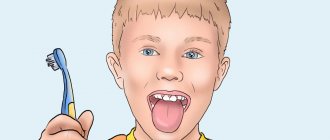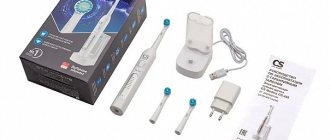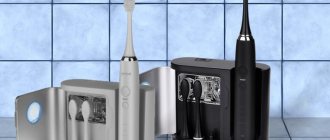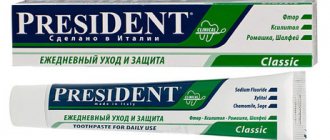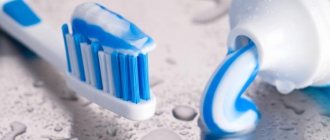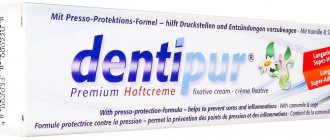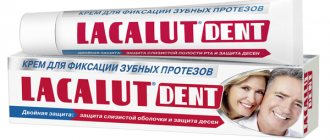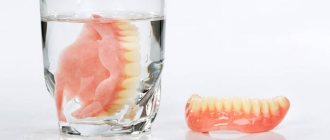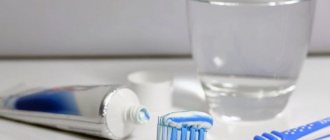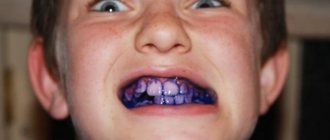A snow-white smile is the prerogative of people who carefully monitor their oral health. If you don’t pay enough attention to the condition of your teeth, their surface can become covered with plaque. What is he? Why is it formed? And how to get rid of it at home or in the dental office? We asked an expert on hygiene and teeth whitening from the network of dental clinics “All Ours!” to answer these questions. Maria Madonova.
What is plaque on teeth
Dental plaque is what dentists call an accumulation of deposits on the surface of teeth. They are formed by microscopic food particles, as well as bacteria and microbes that feed on leftover food in the mouth. Over time, if these deposits are not cleaned off, they become more numerous, they become denser, and become covered with the natural biological film that is present on the tooth enamel. The longer they persist, the more noticeable they become.
The soft plaque gradually changes. Due to the mineralization process, it becomes hard, and with regular contact with dyes it becomes dark in color. Hard seals are no longer plaque, but tartar. And for its wearer it becomes not only an aesthetic problem.
“Tartar has the property of growing down to the root of the tooth,” comments Maria Madonova. “If you don’t remove it, over time it will get to the root and the tooth will fall out.”
Soft deposits are no less dangerous. They become a place for the active spread of pathogenic bacteria. Microorganisms feed on food particles and reproduce. Accelerated growth occurs with an abundance of high-carbohydrate foods: sugar, sweets, flour products. The natural product of microbial activity is acid, which they release when they consume food. This acid destroys tooth enamel, causing tooth decay.
Why plaque forms on teeth
According to the expert, the main reason for the appearance of dental plaque is insufficient oral hygiene. In 90% of cases, plaque accumulations persist due to the fact that a person does not brush his teeth well, does not reach difficult areas with a brush, and also ignores dental floss, which can be used to remove plaque from the interdental spaces.
For this reason, it occurs in both adults and children, but is more common in the latter. Children rarely like to brush their teeth, and even less often do it efficiently and thoroughly. In addition, in childhood they eat more carbohydrate foods, which support the growth of pathogenic microorganisms. All this contributes not only to the preservation of plaque on baby teeth, but also stimulates the development of carious processes.
“A small percentage of people have somatic diseases, for example, problems with the salivary glands,” continues Maria Madonova. — If the patency of the salivary glands is impaired, the surface of the teeth is not sufficiently washed with saliva. This causes the rapid appearance of plaque and tartar. They are formed in large quantities."
In addition, people suffering from diseases of the digestive system are at risk. Often, plaque on the teeth of an adult is one of the symptoms of disorders of the gastrointestinal tract. And if the dentist observes the rapid formation of plaques, he may recommend that the patient consult a gastroenterologist.
Genetic factors also influence. According to doctors' observations, if parents suffer from this problem, plaque on the teeth will also appear in the child.
How to choose the right brush
We have looked at the main characteristics of various toothbrush options, and now let’s move on to specific recommendations on how to correctly evaluate the quality and effectiveness of products. Let's talk separately about the choice for adults and children.
Recommendations for adult patients
When considering various options, you need to pay attention to criteria such as the degree of rigidity, the position of the bristles, their length and number. Moreover, the shape and length of the handle are also selected taking into account the condition of the teeth and gums, and the patient’s age. It is best to talk to your dentist in advance and get professional recommendations in this regard. The simplest and best option in terms of price and efficiency would be a conventional mechanical brush with synthetic bristles made of nylon. Natural bristles become dirty faster, bacteria accumulate in them, multiply and quickly render the tool unusable.
It is better if there is a ribbed surface on the back of the working area - it is intended to clean the tongue, which, by the way, accumulates the most bacteria. If you have the financial means and there are no problems with enamel sensitivity, you can give preference to an electric or ultrasonic model. We’ll talk more about assessing rigidity, material and size in the next section, but for now let’s move on to choosing the most suitable option for the child.
The ribbed surface on the back of the brush will help clean your tongue.
How to choose a brush for a child
By the age of 1.5-2 years, a baby usually already has about 15 teeth in his mouth. This is the best time to start getting him into the habit of brushing his teeth regularly twice every day. In this case, it is necessary to show the child to a specialist as soon as his first teeth begin to cut. And even before they appear, you should keep the baby’s mouth clean by regularly wiping the gums and mucous membranes using special finger wipes.
When a sufficient number of teeth appear, parents will be faced with the question: which brush is best to buy for their child. To avoid making a mistake with your choice, pay attention to the following points:
- appearance – the baby needs to be interested, and a bright, attractive design will help with this. With a brush of an unusual shape and colorful colors, the child will be more willing to brush his teeth every morning and evening,
- bristle parameters - for baby teeth, you need to ensure uniform pressure, and in this regard, even bristles are the best option. Length – no more than 11 mm. Medium and soft hardness is suitable for children - in this regard, you need to consult a dentist to take into account the current state of the enamel,
- working area - the head should not be too large, otherwise it will be uncomfortable to use and there will be a risk of damaging the mucous membrane. The working area should cover 2-3 children's teeth, and it is better to give preference to a round shape,
- handle – should be comfortable, optimal size for a child’s hand. It is better if it is covered with non-slip material. As you grow older, the length of the handle should increase.
Be responsible when choosing a toothbrush for your child.
Experts in the field of pediatric dentistry pay special attention to the change in primary occlusion. During this period, it is better to purchase a brush with multi-level bristles. The product must be replaced with a new one every 3 months.
Sediment color
By the color of the plaques, the dentist can judge the patient’s health status and habits. Usually the surface of the teeth is covered with a yellow, loose mass, but sometimes its color can change. It becomes brown as it mineralizes - hardens, when it turns into tartar. The same color is characteristic of smokers: with constant contact with tobacco smoke, yellowish plaques darken.
They can also be colored by red wine, black tea, and coffee. It is important to understand that healthy enamel cannot be painted, since there are no pores in its surface where dyes penetrate. If the enamel is damaged or has become porous due to demineralization, it may darken when in contact with dyes.
Plaque is always porous; it accumulates and retains coloring pigments from foods and drinks. Therefore, removing dark or brown plaque instantly returns attractiveness to your smile and whiteness and healthy shine to your teeth.
Plaque indication
At home, it is easy to detect the formation of plaques on teeth. It is enough to run your tongue along their inner surface. If you feel roughness, it means that the film has already formed. You can smile at yourself in the mirror and examine your teeth, opening your mouth wide. Dark areas are usually clearly visible against the background of healthy enamel color.
To clarify the localization of masses, you can use a plaque indicator. These are special, safe products that only stain plaques, but do not have any effect on the enamel. Indicators are widely available and are sold in the form of tablets for dissolution in water or ready-made rinse solutions. Methylene blue or fuchsin is added as dyes.
“These dyes allow you to see where there is a large accumulation of plaque,” explains Maria Madonova. — They are used as follows: rinse your mouth with the product before brushing your teeth and inspect their surface. Then clean, paying maximum attention to the painted areas. Rinse your mouth from the paste and rinse again with the indicator. If there are no traces of dye left, then the deposits have been removed.”
How to remove plaque at home
The only way to get rid of it is by thoroughly brushing your teeth. If you notice it after eating, you can go over your teeth with a dry brush. If deposits remain after brushing, you can try to remove them with anti-plaque toothpaste.
Dentists include all whitening pastes containing abrasive particles as such. They gently polish the enamel, removing film from the surface. Pastes for smokers have similar properties. They also contain an abrasive and can be used on a regular basis.
But if plaque remains after brushing your teeth, it will no longer be possible to remove it at home. There are no home remedies that can treat the problem as effectively as a professional dental cleaning. Any attempts to scrape off stone, mineralized and pigmented films on your own will fail and may result in damage to the enamel.
Electric brush with replaceable heads Oral B Sonic
Price: from 1514.6 rub. (check price and discount)
Seller's reliability: excellent!
A fast, modern toothbrush will gently clean your teeth of plaque and prevent caries. The rotation speed of the bristles is 7600/min. The product is sold with 4 replacement tips and a travel case. The device operates on batteries. The bristles on the attachment change color from blue to white when it is time to change the attachment.
Overall, a pretty decent brush for a low price.
I got it. Thanks. The product was tracked and arrived on time. I received another set of brushes as a gift. Very convenient to clean. Case as a gift. Everything is clear.
Black_Hawk_Down
I tried cleaning it and really liked it. The bristles clean well without harming the gums. The seller is smart and delivers good quality goods.
DakMak
We received the goods. A month passed. Haven't used it yet. I was pleasantly surprised and also received a travel case thanks to the seller. I recommend the seller!
Fairy O'Really
View on AliExpress:
Removing dental plaque at the dentist
“Depending on the rate of deposit formation, we can recommend that patients visit a doctor at the required frequency,” notes Maria Madonova. — It is usually enough to perform professional oral hygiene once every six months. But sometimes you need to do this more often—every two to four months.”
Dentists have enough products in their arsenal to help clean soft plaque on teeth and stubborn tartar. Before the procedure, the specialist can use indicators to help the patient see areas where daily hygiene is insufficient. Cleaning will then be carried out in three stages.
- Ultrasonic scaler treatment . The device creates vibrations that break up mineralized deposits. And with a stream of water they are washed away from the tooth surface. The method is absolutely safe, does not heat, scratch or injure the enamel.
- Air Flow cleaning . The doctor uses a sandblaster in which water and cleaning powder are mixed. Under air pressure, the flow is directed to contaminated areas. Soft deposits, pigmentation, and biofilm are removed under pressure.
- Polishing . The procedure is completed by treating the enamel with a special polishing paste, which makes the surface absolutely smooth and prevents food particles and biofilm from adhering to it. After the procedure, the feeling of cleanliness and freshness remains for a long time.
The stone in the interdental spaces is removed with a special tape - a strip. It can have different degrees of roughness and is selected by the doctor depending on the type of deposits. Finish cleaning the interdental areas by polishing with a smooth strip, which makes them smooth and resistant to plaque accumulation.
Zhuyiyuan Soft Bristle Toothbrush Set (10 pcs, 17 colors)
Price: from 451.74 rub. (check price and discount)
Seller's reliability: excellent!
A chic set of 10 toothbrushes for connoisseurs of eco-products. Bamboo handle, comfortable to grip. The color of the bristles can be chosen from 17 offered by the seller. Each brush is neatly packed in a cardboard box. The brush weighs 10 g. The length of the product is 13 cm.
You should definitely try this product in action!
Beautiful, eco-friendly brushes. The bristles are delicate. Does not injure the gums. There are already 10 pieces in the set.
Darkshaper
Fire brushes. The bristles are very soft and do not violate the structure of the protective shell of the tooth. Each is packaged separately, some of the boxes are dented, I did not communicate with the seller.
Crazy
This is the best natural toothbrush. Simple design, soft bristles. Everything is fine. And the price for such a quantity is a godsend!
artman
View on AliExpress:
Prevention
To prevent plaque formation, the expert recommends brushing your teeth better. Ideally, your dentist will show you the cleaning technique, taking into account the individual characteristics of the oral cavity and your state of health. Indicators can be used to point out areas that require attention.
“Visit your dentist so that a specialist can select hygiene products for you,” advises Maria Madonova. — These are irrigators, brushes, dental floss, whitening paste. Brush your teeth twice a day after meals. And after each meal, use dental floss to clean the spaces between your teeth and prevent the formation of caries on contact surfaces.”
Which brush is better: regular or electric?
This is not to say that one is better than the other, but some people find it more convenient to use one of them. There are many types of electric toothbrushes. Instead of relying solely on human power to clean away plaque, electric toothbrushes typically use vibration, rotation (circular motion) or oscillation (back and forth motion) to get the dirty job done. They also have larger handles than regular toothbrushes. These aspects make electric toothbrushes good options for people with dexterity problems due to conditions like rheumatoid arthritis and osteoporosis, or just aging in general.
Because the bristles on electric toothbrushes can sometimes be finer, they help provide the more precise brushing that a person with braces or restored teeth may need. And the vibration may appeal to children, make the process more fun and help them learn to brush their teeth for two minutes. And while we're on the subject of time, some electric toothbrushes have a built-in timer that helps you control how long it takes to get your teeth, gums, and even tongue thoroughly cleaned.
Electric toothbrushes can also help if you are brushing your teeth and gums too hard, which can lead to gum recession that causes sensitivity when eating and drinking. Additionally, some brushes have built-in pressure sensors that stop the toothbrush from moving if you press too hard.
